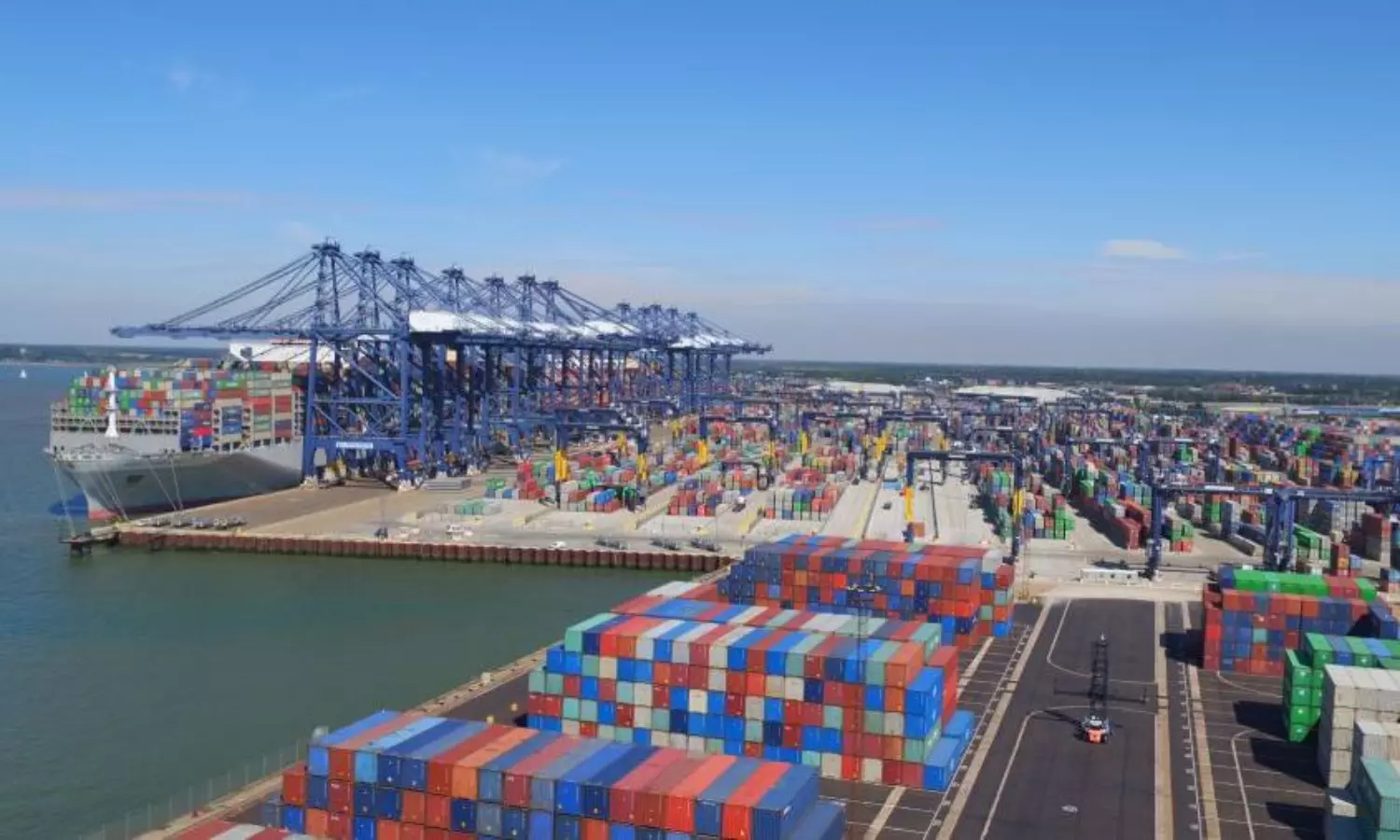Ports exposed to multi-billion-dollar climate risk: Oxford study
Downtime associated with natural hazards puts trade worth $67bn at risk every year, which could result in costly delays

Image Credit: Port of Felixstowe
Nearly nine in ten major ports globally are exposed to damaging climate hazards, resulting in escalating economic impacts on global trade, according to new research from the University of Oxford’s Environmental Change Institute (ECI).
"By their very nature, ports are located in hazard-prone areas along the coast and close to rivers - exposed to storm and floods – and will have to cope with sea level rise and more severe storms because of climate change. This could cause physical damages to port infrastructure, and disrupt port operations - with far-reaching consequences," the research said.
How big could the problem be? "Hurricane Katrina (2005) shut down three ports in the U.S. that handle almost half the country’s agricultural exports. And the 2011 Tōhoku earthquake and tsunami damaged maritime assets worth $12 billion."
Researchers from the ECI provide a detailed picture of climate risks for 1,340 of the most important ports globally. "It combines a new geospatial database of port infrastructure assets with the most detailed available information on natural hazards including earthquakes, cyclones and flooding as well as localised information on marine extremes (wind speeds, waves, temperature, overtopping)."
Jasper Verschuur, research lead says: "We found 86 percent of all ports are exposed to more than three types of climatic and geophysical hazards. Extreme conditions at sea (e.g. storms) are expected to cause operational disruptions to around 40 percent of ports globally. What’s more, ports are exposed to other hazards including river flooding and earthquakes so port designers and operators have to take multiple hazards into consideration. That’s not always happening at the moment. For instance, the foundations of quay walls need careful consideration when exposed to earthquakes, the orientation and design of breakwaters when exposed to extreme waves and surges, and the drainage system when exposed to fluvial and pluvial flooding. If that doesn’t happen, we could see major disruptions to global trade and supply chains."
The climate risk totals $7.6 billion per year, most of which is attributed to tropical cyclones and river flooding of ports, the study reported. On top of the physical damages, port downtime associated with natural hazards puts trade worth $67 billion at risk every year, which could result in costly delays, revenue losses, and impacts to the wider economy.
"Luckily, initiatives are ongoing to upgrade outdated and inefficient port infrastructure at many ports. However, these efforts fall short given the expected climate change challenges ports will face over the next few decades," adds Verschuur.
The largest climate risks are faced by large ports in Asia, the Gulf of Mexico and those in Western Europe. Despite the absolute risk being particularly large in high-income countries, the impacts could be greatest in middle income countries’ ports, the study added.


